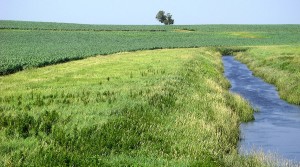There is no question that farm runoff, and the nitrogen and phosphorus that go with it into rivers and streams, is a primary contributor to the toxic algae that is destroying precious surface water resources.

The fixes to this problem are known, but implementation is slow and often viewed as expensive. The latter position a highly debatable one.
Not so as is being shown in Iowa, where contributions from The Walton Family Foundation — in cooperation with the Iowa Soybean Association — are being used with the goal of reducing runoff by 45% over the next 20 years.
Our opinion is that, once the clean-up strategies are put into place, runoff will be reduced at an even swifter pace — all while profits for farmers increase. Truly a win-win scenario for all involved.

